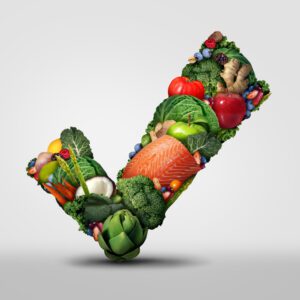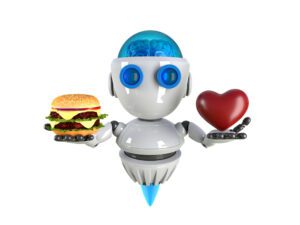Last year, restaurants across the US generated a record $863 billion in sales from more than a million locations. That is outpacing grocery retail sales with more than half of every dollar spent on food going to restaurants. Perhaps that’s thanks in part to some of the trends that have shaped the restaurant industry and the technology that begs guests to keep coming back.
As we enter into the third decade of the new millennium, it’s worthwhile to reflect on some of the major restaurant technology trends of the 2010’s that have completely changed the way we dine.
Social Media Ate First
Social media took the world by storm over the past decade and one of the biggest players in the space is the photo  and video sharing app Instagram, which launched in 2010. With over a billion monthly active users on the platform it is one of the most popular social media applications to this day.
and video sharing app Instagram, which launched in 2010. With over a billion monthly active users on the platform it is one of the most popular social media applications to this day.
In the 2010s, it became incredibly trendy to post photos of food to your network of followers and show where and what you’re eating. This resulted in brand exposure for many restaurants, which not only helps to draw in new customers, but also enables them to share and showcase their dishes on their own account as well.
Best of all, Instagram and other photo sharing social media platforms continue to grow 10 years later, meaning that restaurants will continue to share more photos and videos of their unique culinary experiences.
Increased Demand for Online Ordering and Delivery Platforms
Convenience is the name of the game for restaurants, especially as customers have become busier and more focused on speed than ever before. In fact, the average diner only sticks around for 16 minutes, and restaurants have to compete for their place within that small window of dining time.
focused on speed than ever before. In fact, the average diner only sticks around for 16 minutes, and restaurants have to compete for their place within that small window of dining time.
Third-party ordering and delivery add an additional layer of convenience for busy customers who are looking for a quick meal to be delivered from restaurants that don’t typically offer their own delivery services. Many of these services can integrate with restaurant POS systems for easy order preparation and management. Some restaurants are benefiting from this model so much that they have become a ghost kitchen.
However, the $10 billion delivery business is causing a disruption across the industry. Perhaps in the next decade we will see restaurants wanting to take back control of the chain of custody when it comes to delivery to help combat some of the issues that surround the fact customers don’t want to pay a substantial amount more for food if it’s anything less than perfect.
Customers Ordered, Ate, and Paid Right from the Table
 Restaurant customers don’t want to wait for their orders any longer than they need to, and that’s why self-order kiosks and tablet technology has become more important across the restaurant industry throughout the past decade than ever before. Ten years ago, this technology simply didn’t exist in this setting and now restaurants will never be the same without it.
Restaurant customers don’t want to wait for their orders any longer than they need to, and that’s why self-order kiosks and tablet technology has become more important across the restaurant industry throughout the past decade than ever before. Ten years ago, this technology simply didn’t exist in this setting and now restaurants will never be the same without it.
Some of the biggest name restaurants in the quick service industry have turned to kiosk solutions to make a difference in operations. McDonald’s has deployed self-service kiosks throughout most of its US network of locations and is preparing for a technology-filled future of the industry that includes a high volume of upselling and cross-selling products.
Tablet and kiosk tech have also taken hold in the past decade at the restaurant table as well. Customers can place their order right from a small, table-top device that integrates directly with a restaurant’s POS system to ensure the order is received. This way they are making their own selection, which improves order accuracy and customer satisfaction.
Also, self-order technology lends itself to allow customers to pay for their meals directly from the table via swipe or dip of a card. Restaurant waitstaff no longer has to take a customer’s card, which helps them feel safe and secure in their payment options and allows them to get out the door quicker.
Food Safety Became Automated
Making sure customers are safe is top of mind for restauranteurs, especially when it comes to the food they  provide. Over the past decade we’ve seen great advances in restaurant technology and software that automate food safety standards.
provide. Over the past decade we’ve seen great advances in restaurant technology and software that automate food safety standards.
Not only does this help ensure food is safe and easy to manage, it also helps restaurant employees know when to take food temperatures and keep sell by dates top of mind. This tracking method helps trace and eliminate any potentially deadly foodborne illness issues. Best of all, automated processes help save labor costs for restaurants and help boost overall revenue.
Digital Menu Boards Gave Customers More Options
It’s no secret we’ve entered into the digital age, and restaurants aren’t exempt from the technology upgrades that come with this, especially when it comes to how they display their menus and offerings. Digital signage popped up everywhere from billboards to retail stores, and became especially apparent all across the restaurant industry.
Digital menu boards and restaurant signage have more space than traditional boards and often transition through several pages of menu information and content to show customers more options. Because of this, customers are more informed and can make better decisions about their food choices (and are more likely to add more onto their order!).
Also, restaurant owners or managers can update digital menu boards in real time to switch between meals such as breakfast and lunch. They also have the power to update the menu to reflect the inventory to help avoid disappointing customers if an item is out of stock, which creates an overall better customer experience for today’s restaurant consumers.
The Next Decade of Restaurant Technology
 The restaurant industry is constantly changing and evolving, especially when it comes to the technology solutions your hospitality operation needs to find success. Let the restaurant technology experts at Mainstreet help your business find the solutions you need to prepare for the next decade. Contact us today to get started.
The restaurant industry is constantly changing and evolving, especially when it comes to the technology solutions your hospitality operation needs to find success. Let the restaurant technology experts at Mainstreet help your business find the solutions you need to prepare for the next decade. Contact us today to get started.